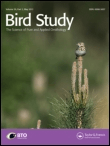
BIRD STUDY
Scope & Guideline
Exploring the intricate world of birds and their ecosystems.
Introduction
Aims and Scopes
- Avian Ecology and Behavior:
Researching the ecological interactions of birds with their environment, including habitat selection, diet, and breeding behaviors. This includes studies on how birds adapt to various ecological pressures. - Conservation Biology:
Focusing on the conservation needs of bird species, particularly those that are threatened or declining, by studying population dynamics, habitat requirements, and the effects of human activities. - Migration and Movement Patterns:
Investigating the migratory behaviors of various bird species, including their breeding and wintering habitats, to understand their life cycles and the challenges they face during migration. - Impact of Environmental Changes:
Analyzing how environmental changes, such as climate change and habitat loss, affect bird populations and their ecosystems, providing crucial insights for conservation strategies. - Human-Wildlife Interactions:
Examining the interactions between birds and humans, including urbanization impacts, feeding behaviors, and the implications of human activities on bird populations.
Trending and Emerging
- Climate Change Effects:
There is a growing emphasis on understanding how climate change impacts bird populations, migration patterns, and breeding success. This theme is crucial as it informs conservation strategies in the face of global environmental changes. - Urban Ecology and Adaptation:
Research exploring how birds adapt to urban environments is on the rise. This includes studies on urban nesting, foraging behaviors, and the implications of urbanization on bird diversity and population dynamics. - Technological Innovations in Avian Research:
The use of advanced technologies, such as GPS tracking and remote sensing, is increasingly prevalent in studies. This trend allows for more precise data collection and analysis, enhancing understanding of bird movements and habitat usage. - Multi-species Interactions and Community Dynamics:
There is an emerging focus on the interactions between multiple bird species and their ecological communities. This trend reflects a broader ecological approach that considers the interdependence of species within their habitats. - Conservation Genetics:
Research integrating genetic studies into conservation efforts is gaining traction, providing insights into the genetic diversity and resilience of bird populations, which is critical for effective management and conservation planning.
Declining or Waning
- Traditional Habitat Studies:
Research focusing solely on traditional habitat characteristics without integrating modern ecological approaches or technology appears to be waning. The emphasis has shifted towards more dynamic studies that consider changing landscapes and human impacts. - Static Population Assessments:
There has been a noticeable decline in studies that merely report population numbers without addressing the underlying ecological factors or conservation implications. Recent publications are increasingly focusing on the dynamics of populations and their responses to environmental changes. - Behavioral Studies in Isolation:
Studies that examine bird behavior in isolation, without considering the broader ecological context or interactions with other species, are becoming less common. Current research trends favor integrated approaches that link behavior to ecological and environmental variables.
Similar Journals
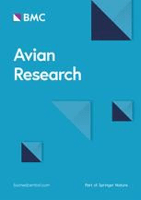
Avian Research
Exploring the complexities of bird biology and conservation.Avian Research is a premier, open-access journal dedicated to advancing the field of ornithology and avian studies. Published by KEAI PUBLISHING LTD since 2014, this journal aims to disseminate high-quality research covering a broad spectrum of topics related to bird biology, ecology, behavior, and conservation. With its impactful presence, rated as Q1 in Animal Science and Zoology and Q2 in Ecology, Evolution, Behavior and Systematics for 2023, Avian Research stands out as a pivotal resource for researchers, professionals, and students alike. The journal's dedication to open access ensures that valuable findings are readily available to a global audience, fostering collaboration and innovation within the scientific community. Located in Beijing, China, Avian Research invites contributions that advance our understanding of avian species and their environments, playing a critical role in promoting biodiversity and sustainable practices in avian conservation.

NOTORNIS
Championing the study of birds for biodiversity.NOTORNIS is a prestigious academic journal published by the Ornithological Society of New Zealand, dedicated to advancing the field of ornithology and contributing meaningful research related to avian species. With ISSN 0029-4470 and E-ISSN 1177-7680, this journal has been a vital resource for scholars since its inception in 1982, continuously fostering discourse within the scientific community, particularly in the realms of animal science and zoology. Though it currently holds a quartile ranking of Q4, with a Scopus rank of #250 out of 490 in its category, NOTORNIS occupies a unique niche in ornithological research, promoting studies that highlight the ecological and biological intricacies of birds. This journal is critical not only to researchers and professionals in zoology but also to students and educators aiming to engage with contemporary avian research. As New Zealand's leading ornithological publication, NOTORNIS underscores the importance of avifaunal studies in conserving biodiversity and understanding ecological dynamics.

MALIMBUS
Advancing avian science through rigorous research.MALIMBUS is a peer-reviewed journal published by the West African Ornithological Society, focusing on the study of avian biology and conservation. It aims to disseminate important research findings that contribute to the understanding of bird species, their habitats, and the challenges they face across West Africa and beyond. Although currently not available in an open-access format, the journal is an invaluable resource for ornithologists, ecologists, and industry professionals keen on advancing their understanding of avian science. Those engaged in research on bird migration, breeding behaviors, and conservation strategies will find MALIMBUS to be a vital platform for sharing innovative ideas and fostering collaborations. With its commitment to quality and rigorous review processes, MALIMBUS is an essential reference for anyone dedicated to studying and preserving avian diversity.

Ornithology Research
Innovating the Future of Ornithological ResearchOrnithology Research is a leading academic journal published by SPRINGERNATURE, specializing in the field of avian studies and contributing to the broader category of Animal Science and Zoology. With a respectable Q2 ranking in its field as of 2023, this journal provides a dynamic platform for the dissemination of innovative research findings related to ornithology, ecology, and conservation. The journal, which transitioned to an Open Access model, ensures that its research is accessible to a global audience, fostering collaboration and knowledge sharing across disciplines. With an E-ISSN of 2662-673X, Ornithology Research serves the needs of researchers, professionals, and students dedicated to understanding the complexities of avian life. Its commitment to high-impact, peer-reviewed articles makes it an essential resource for anyone interested in advancing the science of ornithology.

RUSSIAN JOURNAL OF HERPETOLOGY
Fostering Insights into Reptilian and Amphibian LifeRUSSIAN JOURNAL OF HERPETOLOGY is a prominent scholarly publication dedicated to the field of herpetology, focusing on the study of reptiles and amphibians. Published by FOLIUM PUBL CO in the Russian Federation, this journal aims to foster the exchange of knowledge and research in animal science, ecology, evolution, and behavior. With its ISSN 1026-2296 and a significant commitment to high-quality academic discourse, the journal maintains a respectable standing within the Q3 quartile in both Animal Science and Zoology, as well as in Ecology, Evolution, Behavior, and Systematics. This attributes to its Scopus rank among leading journals in related fields, enhancing its visibility and influence. Spanning from 2014 through 2024, it publishes rigorous research that explores the diversity, biology, and conservation of herpetofauna, making it a vital resource for researchers, professionals, and students alike who are invested in the ecological and evolutionary dynamics of these species.

OSTRICH
Advancing Knowledge in Ecology and EvolutionOSTRICH, a distinguished journal published by Taylor & Francis Ltd, serves as a pivotal platform for disseminating research in the fields of ecology, evolution, behavior, and systematics. With an ISSN of 0030-6525 and an E-ISSN of 1727-947X, this journal has been contributing vital insights to the scientific community since its inception in 1930. Maintained in the UK, OSTRICH holds a respectable Q3 category ranking in the 2023 Ecology, Evolution, Behavior, and Systematics quartiles and ranks 408th out of 721 within its scientific domain according to Scopus, showcasing a competitive position within the 43rd percentile. OSTRICH is committed to publishing high-quality research that informs conservation efforts and biodiversity studies, making it an essential resource for researchers, professionals, and students interested in avian biology and related ecological fields. While not currently an open-access journal, OSTRICH offers varied access options through institutions and libraries, further widening its reach and impact within the scientific community. We invite academics and practitioners to explore its valuable articles that drive forward innovations in avian research.

JOURNAL OF ORNITHOLOGY
Unveiling Insights into Avian EcologyJOURNAL OF ORNITHOLOGY, published by Springer Heidelberg, is a leading international journal dedicated to the study of birds and their conservation. With an ISSN of 2193-7192 and an E-ISSN of 2193-7206, this journal serves as a crucial platform for disseminating innovative research focused on avian biology, ecology, and behavior, making significant contributions to the fields of Agricultural and Biological Sciences and Animal Science and Zoology, where it holds a commendable rank of #156 out of 490 in Scopus. Established from 2004 and continuing through 2024, the journal strives not only to advance academic scholarship but also to inform practical conservation efforts globally. While currently not open access, it remains a vital resource for researchers, professionals, and students seeking high-quality studies and findings that influence the understanding and preservation of bird species. The journal's commitment to excellence in science highlights its importance in ornithological research, offering insights that are both profound and actionable.
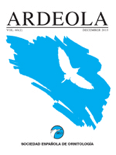
Ardeola-International Journal of Ornithology
Fostering Global Dialogue in OrnithologyArdeola - International Journal of Ornithology, published by the SOCIEDAD ESPAÑOLA DE ORNITOLOGÍA, serves as a vital platform for the dissemination of research in the field of avian studies. With a history dating back to 1980, this esteemed journal has cultivated a reputation for high-quality research, achieving a notable Q2 category ranking in Animal Science and Zoology as well as in Ecology, Evolution, Behavior, and Systematics as of 2023. While primarily based in Spain, Ardeola caters to a global audience, providing essential insights into ornithology through rigorously peer-reviewed articles. The journal does not currently operate under an open-access model, which underscores the significance of institutional subscriptions and the importance of supporting academic publishing. Researchers, professionals, and students engaged in avian ecology will find Ardeola indispensable for accessing impactful studies that advance our understanding of bird populations, behaviors, and conservation issues. With its accessibility and continuing commitment to excellence, Ardeola plays a crucial role in fostering knowledge and promoting dialogue in the ornithological community.
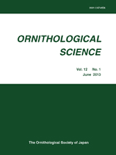
ORNITHOLOGICAL SCIENCE
Fostering impactful discourse in ornithological research.ORNITHOLOGICAL SCIENCE, published by the Ornithological Society of Japan in collaboration with the University of Tokyo, stands as a pivotal platform for advancing knowledge in the field of ornithology. With a keen focus on avian biology and conservation, this esteemed journal is dedicated to publishing high-quality research, reviews, and technical notes that explore the intricacies of bird science. Although currently categorized within the Q4 quartile in Animal Science and Zoology, the journal aims to elevate its standings by fostering scholarly communication and impactful scientific discourse. This journal has been consistently publishing since its inception in 2002, with a brief hiatus before resuming its invaluable contributions to the scientific community in 2009. Despite the absence of specific open access options, the journal remains a crucial resource for researchers, professionals, and students seeking to expand their understanding of avian ecology and behavior. Through its comprehensive scope, ORNITHOLOGICAL SCIENCE reflects the increasing importance of ornithological studies in addressing global biodiversity issues and conservation challenges.
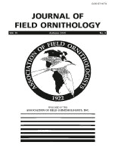
JOURNAL OF FIELD ORNITHOLOGY
Pioneering Research in Ornithological StudiesJOURNAL OF FIELD ORNITHOLOGY, published by the Resilience Alliance, is a premier academic journal dedicated to advancing knowledge in the fields of ornithology, ecology, and animal behavior. With an ISSN of 0273-8570 and a growing E-ISSN of 1557-9263, this journal has been a vital platform for researchers since its inception in 1996, continuing to publish cutting-edge studies up until 2024. The journal is recognized within the academic community, holding a Q2 ranking in Animal Science and Zoology and a Q3 ranking in Ecology, Evolution, Behavior and Systematics as of 2023. While the journal does not currently operate under an open access model, it remains a critical source for researchers, students, and professionals seeking to explore innovative research and discoveries in field ornithology. The diverse range of topics covered underscores its commitment to highlighting significant findings and fostering a deeper understanding of avian species and their ecosystems.